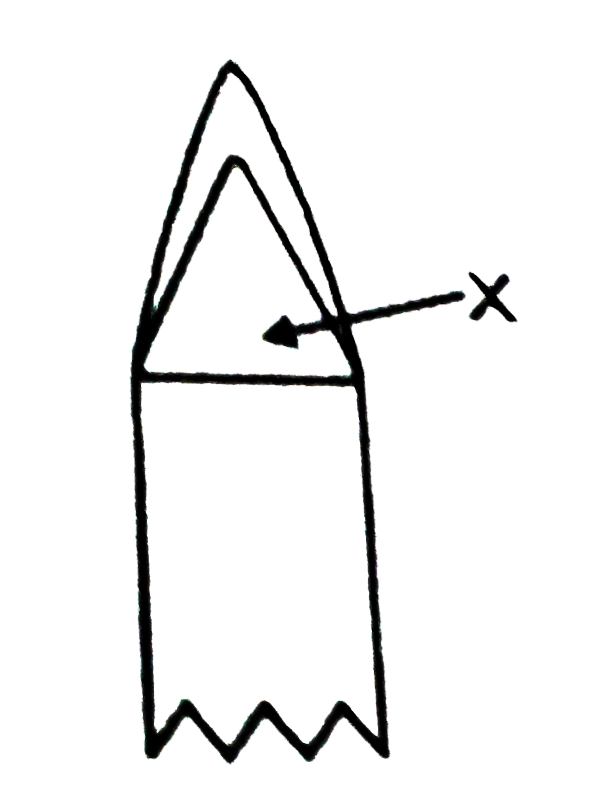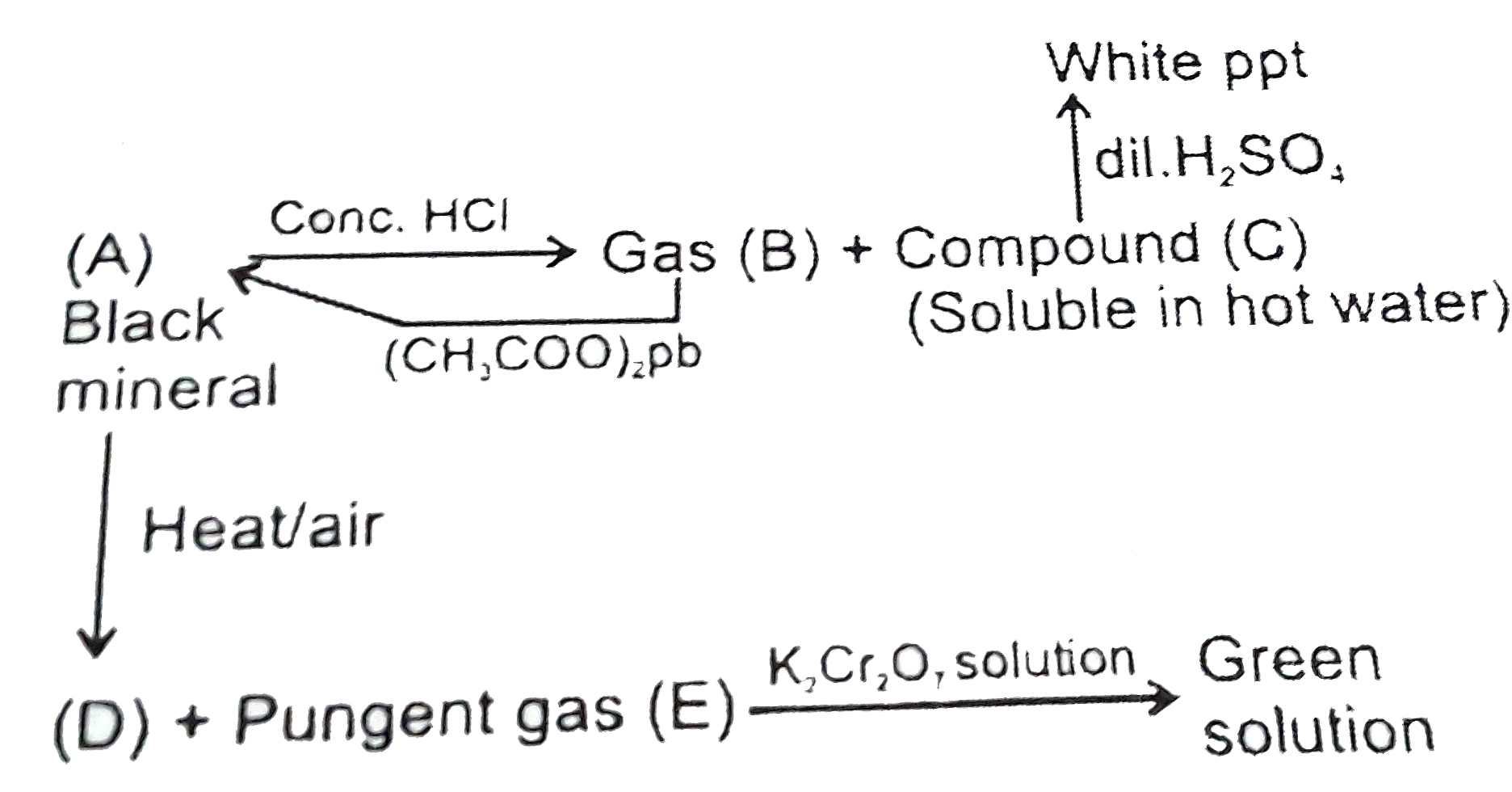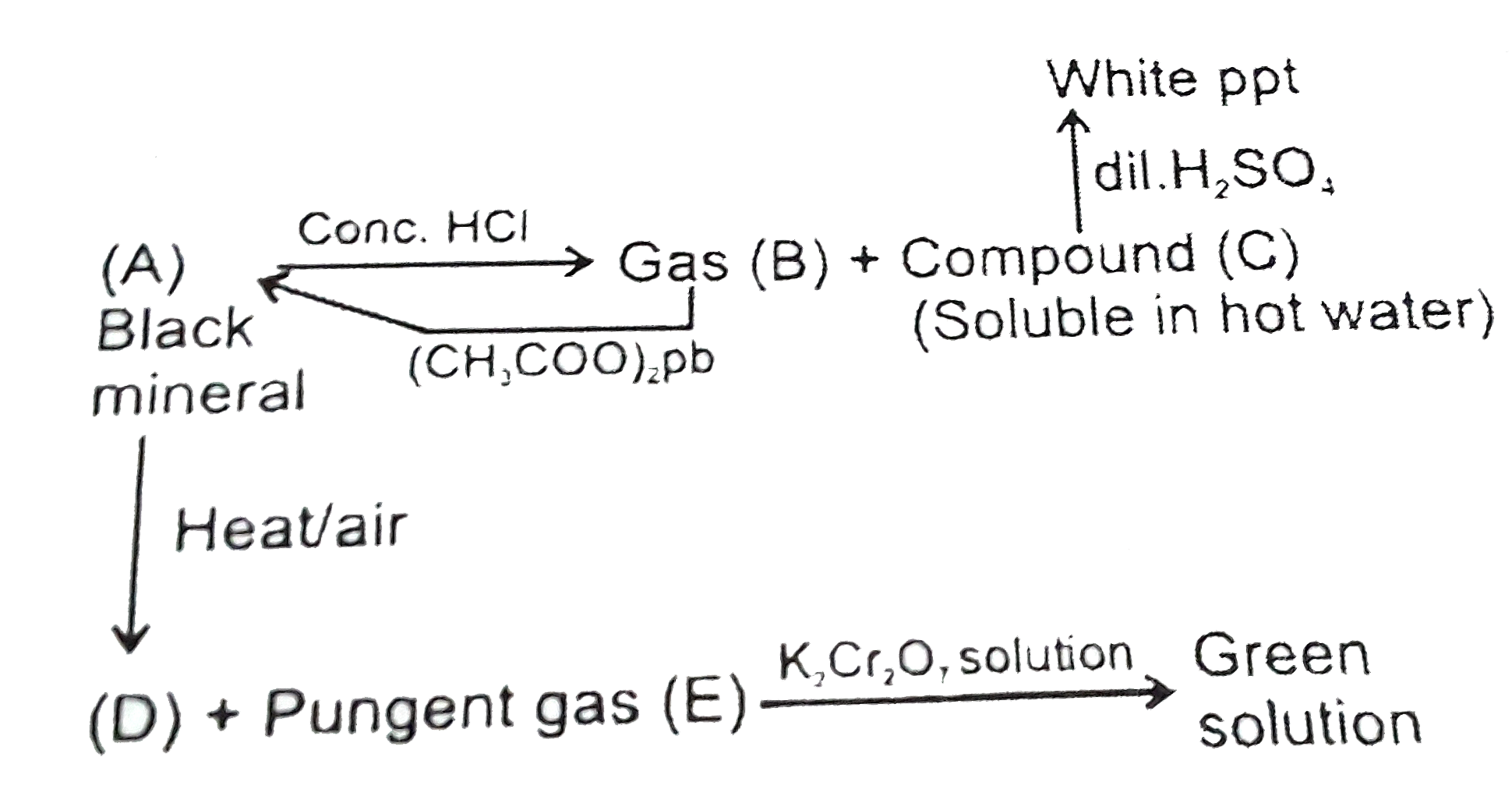Complete Solutions to Exercise-2 of chapter QUALITATIVE ANALYSIS (ANION) of Class 12 book with complete answers and questions
| Class 12 | CHEMISTRY |
| Chapter | QUALITATIVE ANALYSIS (ANION) |
| RESONANCE NEW | Exercise-2 |
| Number Of Questions | 44 |
| Academic Year | 2023-24 |
The compound formed in the borax bead test of `Cu^(2+)` ion in oxidising flame is :
View SolutionA fire work gave green light. It probably contained a salt of
01:43View SolutionAlkali metal salt "X" gives a pale violet colour in flame test "X" is :
View SolutionBorax bead is responded generally by :
View Solution
Shape of anion A will be :View SolutionWhich of the following anions are producing same gas on treatment with `(Zn+ " dil." H_(2)SO_(4))`.
`I :SO_(3)^(2-) " " II : HSO_(3)^(-) " " III : S^(2-) " " IV : Cl^(-)`View SolutionConsider the following reaction, Nitrite + Acetic acid + Thiourea `to Na_(2) uarr + HSCN +2H_(2)O`. Formation of the product in the above reaction can be identified by :
View SolutionA white sodium salt dissolves readily in water to give a solution which is neutral to litmus. When silver nitrate solution is added to the solution, a white precipitate is obtained which does not dissolve in dil. `HNO_(3)`. The anion could be `:`
00:54View SolutionA salt solution of `Cd^(2+)` in dilute HCl, on treatment with a solution of `BaCl_(2)` gives a white precipitate, which is insoluble in concentrated `HNO_(3)`. Anion in the salt may be :
View Solution
The gas 'G' will show which of the following property ?View SolutionSodium borate on reaction with conc. `H_2 SO_4` and `C_2 H_5 OH` gives a compound A which burns with a green edged flame. The compound A is
01:44View SolutionHow many compounds liberate `NH_(3)` on heating from the following ?
(i) `(NH_(4))_(2)SO_(4) " " (ii) (NH_(4))_(2)CO_(3) " " (iii) NH_(4)Cl`
(iv) `NH_(4)NO_(3) " " (v) (NH_(4))_(2)Cr_(2)O_(7)`View SolutionHow many of following metals impart a characteristic colour to the Bunsen flame ?
`(i) Na " " (ii) Li " " (iii) K " " (iv) Ba`
`(v) Sr " " (vi) Mg " " (vii) Rb " " (viii) Cs`
(ix) `Be " " (x )Ca " " (x i)Cu`View SolutionNumber of ions which are identified by dil. HCl from the following.
`(i) SO_(4)^(2-) " " (ii) CO_(3)^(2-) " " (iii) SO_(3)^(2-) " " (iv) HCO_(3)^(-)`
(v) `SO_(3)^(2-) " " (vi) NO_(3)^(-) " " (vii) CH_(3)CO O^(-) " " (viii) PO_(4)^(3-)`View SolutionFind the total number of acidic radical which produce volatile product with dil HCl :
`(i) SO_(4)^(2-) " " (ii) I^(-) " " (iii) NO_(2)^(-) " " (iv) NO_(3)^(-)`
(v)` SO_(3)^(2-) " " (vi) HCO_(3)^(-)`View Solution`Na_(2)S + Na_(2)[Fe(CN)_(5)NO]to " X"` (Violet colour)
The total number of possible isomers for complex " X" is , provided the ambident behaviour of `CN^(-)` is not considered.00:49View Solution`Fe^(2+)+NO_(3)^(-) +H_(2)SO_(4) ("conc.") to "X"` (Brown ring complex)
The magnetic moment of complex 'X' to its nearest integer is :View SolutionHow many anions evolve brownish gas when treated with dil. /con. HCl ?
`(i) CO_(3)^(2-) " " (ii)SO_(3)^(2-) " " (iii) NO_(2)^(-) " " (iv)Cl^(-)`
`(v) Br^(-) " " (vi) NO_(3)^(-) " " (vii) CH_(3)CO O^(-)`View Solution`Na_(2)CO_(3),NaCl, NaNO_(2),Na_(2)SO_(3),NaBr,CH_(3)CO O Na` are separately treated with `AgNO_(3)` solution. In how many cases white precipitate is/are obtained.
View Solution`B_(3)^(3-)+Conc.H_(2)SO_(4)+CH_(3)-CH_(2)-OH overset(ignite)rarr(A)`
What is the oxidation number of central atom that is responsible for green flame in compound `(A)`?01:51View Solution
a=difference in the oxidation number of Cl in the product X and product Y, respectively
b= total number of atom in X and Y
c=total number of lone pair in X
then calculate a+b+c = ?View SolutionWhich of the following salt liberates a colourless gas on acidification with dil. `H_(2)SO_(4)` ?
View SolutionWhich of the following salts release reddish brown gas when heated in a dry test tube ?
View SolutionWhich of the following can decompose on heating to give `CO_(2)` ?
View SolutionMetals which do not give flame test ?
View SolutionIn the following diagram bunsen flame the (X ) represent.
 00:46View Solution
00:46View SolutionMetal salts, which respond to Borax bead test ?
View SolutionWhich of the following gases turn lime water milky when passed throught it.
View Solution
Then A may have :View Solution`S^(2-) " and" SO_(3)^(2-)` can be distinguished by :
View SolutionWhich statements is/are correct about sodium nitroprusside test ?
View SolutionWhich statement(s) is /are correct about Brown ring test ?
View SolutionWhich of the following metal chlordie will give chromyl chloride test ?
View SolutionWhich of the following will be completely or partially dissolved in `NH_(4)OH` ?
View SolutionReddis-brown gas is obtained when the following are treated with conc. `H_(2)SO_(4)` ?
View SolutionEach of these are added to a mixture of aqueous solutions of iodide and `CHCl_(3)` separately. Which will give a positive test for iodine when the solution are vigorously mixed ?
View Solution`underset("(mixture of two anions)")A underset("excess of "BaCl_2)overset("Cold")to"white ppt."overset"filtered"to"(Filtrate)" overset"boil"to"White ppt"darr`
Anion of (A) could be :View Solution
'A' can beView Solution
In step-III if `Pb(CH_(3)CO O)_(2)` is added without acidifying the solution with `CH_(3)CO OH` then possibel product may be :View Solution
Gas (B) on passing through cadmium acetate solution will give :View Solution
Gas (B) and (E ) are respectively :View Solution
Select the only correct option.View Solution
Select the only incorrect option.View Solution
Select the only incorrect option.View Solution
Exercise-2 questions and complete solutions for chapter QUALITATIVE ANALYSIS (ANION) of PHYSICAL, INORGANIC, AND ORGANIC CHEMISTRY of Class 12
All Exercises from RESONANCE NEW Class 12 CHEMISTRY QUALITATIVE ANALYSIS (ANION)
- Additional Problems for Self Practice (APSP)
- Comprehension
- Exercise-1
- Exercise-2
- Exercise-3
- Match The Column
- Matching List Type
- Miscellaneous Solved Problems (MSPs)
- One Or More Than One Options Correct Type
- Paragraph For Questions
- Part-II : National Standard Examination IN
- Part-III : High Level Problems (HLP)
- Part-IV : Practice Test-10
- Part-IV : Practice Test-11
- Part-IV : Practice Test-12
- Part-IV : Practice Test-13
- Part-IV : Practice Test-14
- Part-IV : Practice Test-15
- Part-IV : Practice Test-16
- Part-IV : Practice Test-17
- Part-IV : Practice Test-18
- Part-IV : Practice Test-19
- Part-IV : Practice Test-2
- Part-IV : Practice Test-3
- Part-IV : Practice Test-4
- Part-IV : Practice Test-5
- Part-IV : Practice Test-6
- Part-IV : Practice Test-7
- Part-IV : Practice Test-8
- Part-IV : Practice Test-9
- Single And Double Value Integer Type
